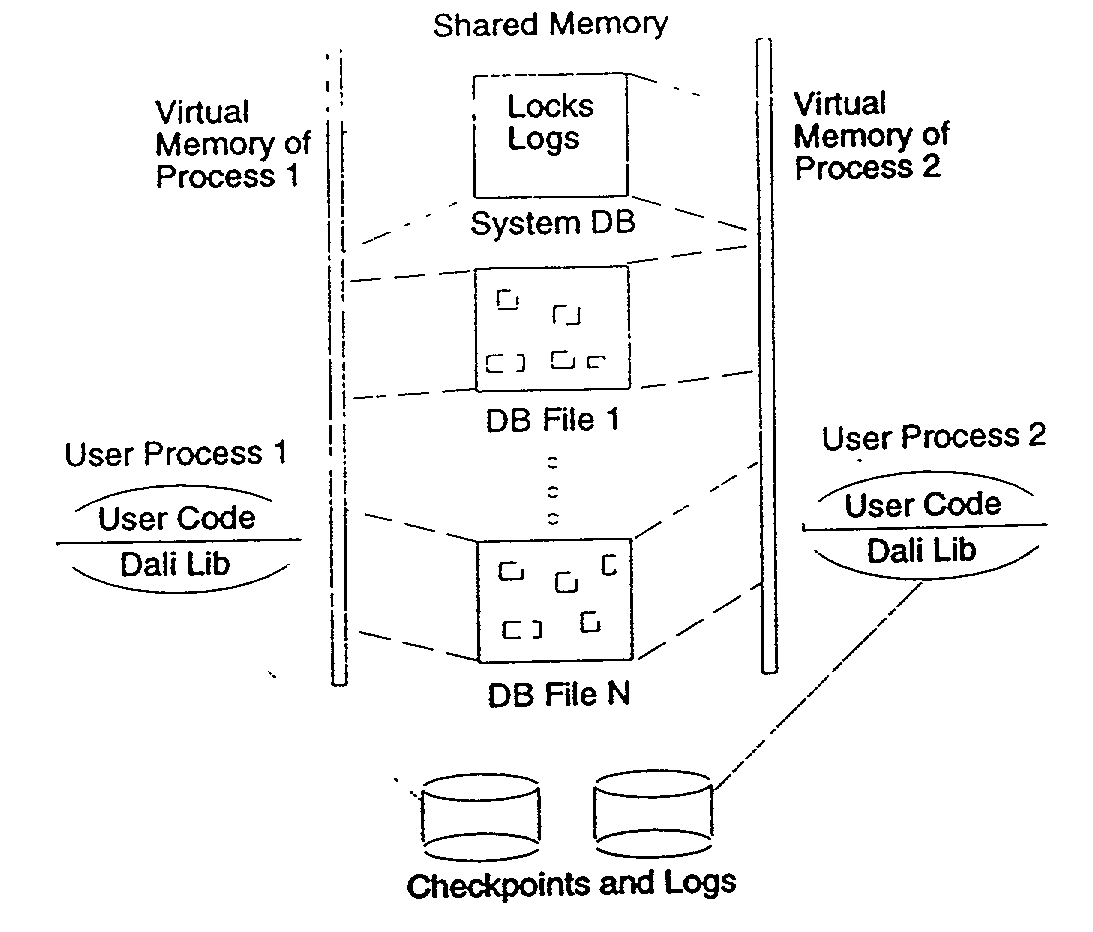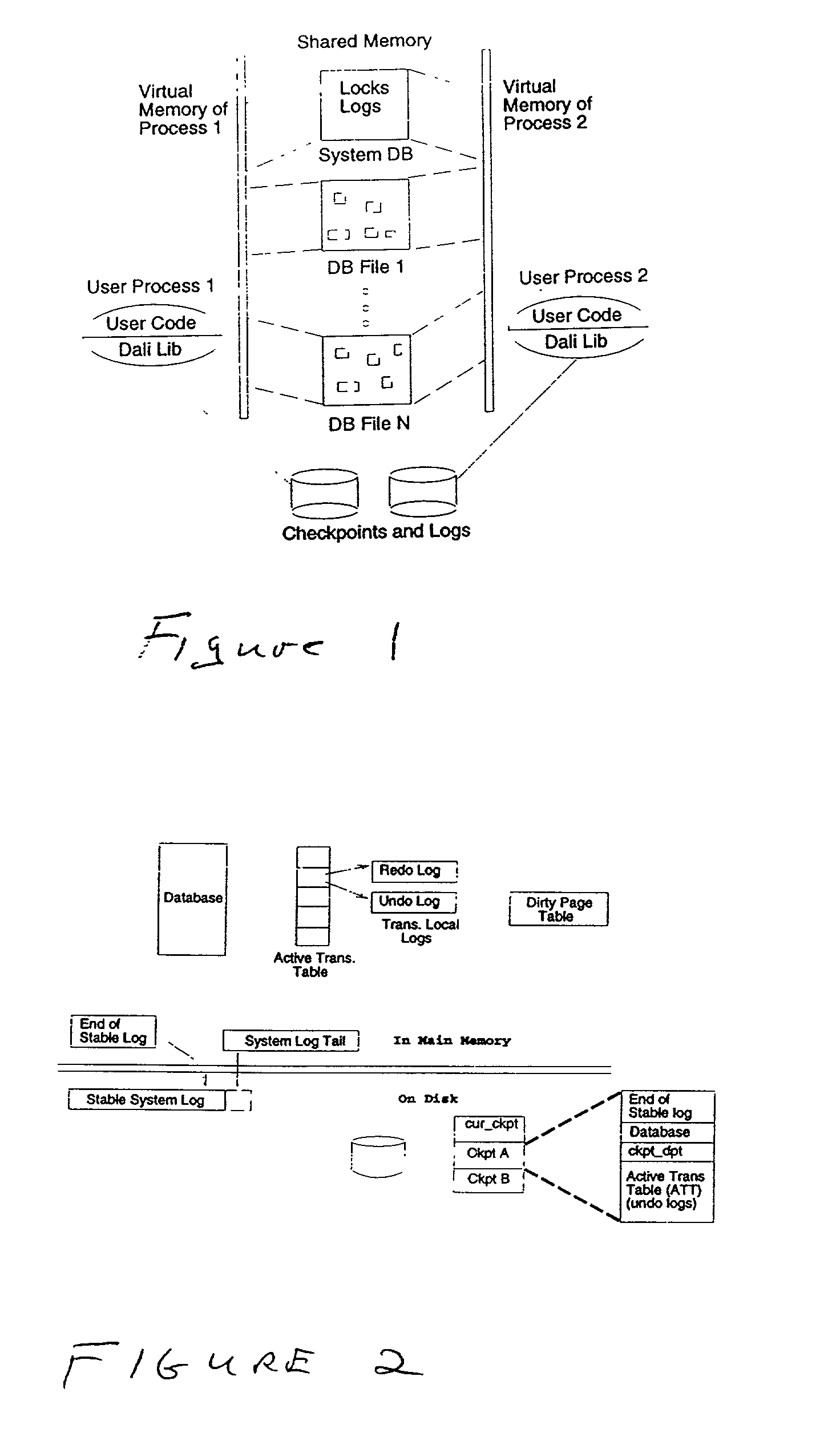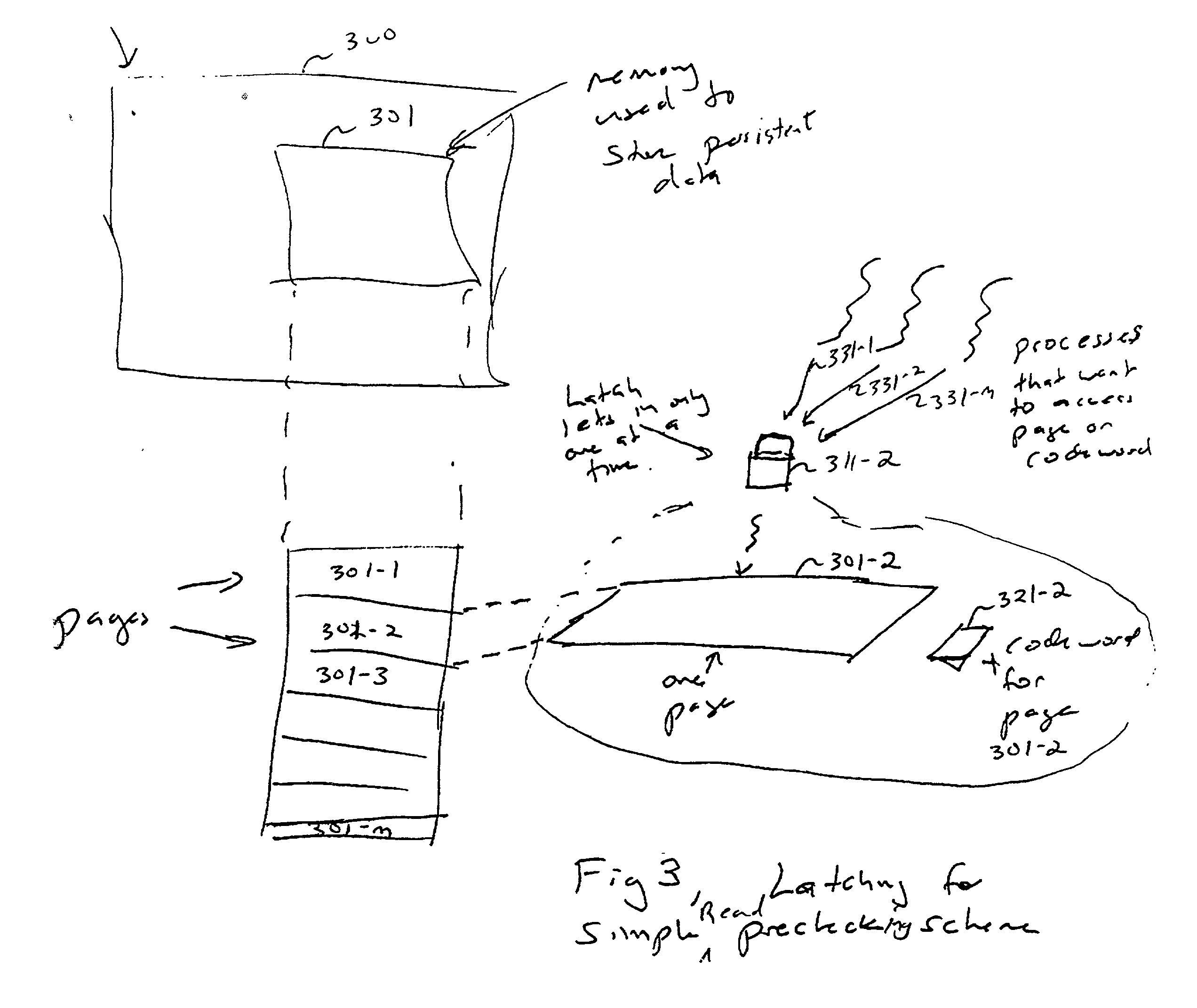Method and apparatus for detecting and recovering from data corruption of database via read logging
a database and read logging technology, applied in the field of database management systems, can solve problems such as unacceptable solutions, programming errors can affect persistent data, application code is typically less trustworthy, and application code is less trustworthy
- Summary
- Abstract
- Description
- Claims
- Application Information
AI Technical Summary
Benefits of technology
Problems solved by technology
Method used
Image
Examples
Embodiment Construction
[0026] Introduction
[0027] Referring briefly to FIG. 1, there is shown an overall architecture of the Dali storage manager on which the present invention has been implemented. The Dali system should be considered only an exemplary implementation of the present invention and the present detection and recovery algorithms may be applied in other architectures as well. The database in a Dali system consists of one or more database files, along with a special system database file. User data itself is stored in database files while all data related to database support, such as log and lock data, is stored in the system database file. This enables storage allocation routines to be uniformly used for persistent user data as well as non-persistent system data like locks and logs. The Dali system database file also persistently stores information about the database files in the system.
[0028] As shown, database files opened by a process are directly mapped into the address space of that process...
PUM
 Login to View More
Login to View More Abstract
Description
Claims
Application Information
 Login to View More
Login to View More - R&D
- Intellectual Property
- Life Sciences
- Materials
- Tech Scout
- Unparalleled Data Quality
- Higher Quality Content
- 60% Fewer Hallucinations
Browse by: Latest US Patents, China's latest patents, Technical Efficacy Thesaurus, Application Domain, Technology Topic, Popular Technical Reports.
© 2025 PatSnap. All rights reserved.Legal|Privacy policy|Modern Slavery Act Transparency Statement|Sitemap|About US| Contact US: help@patsnap.com



